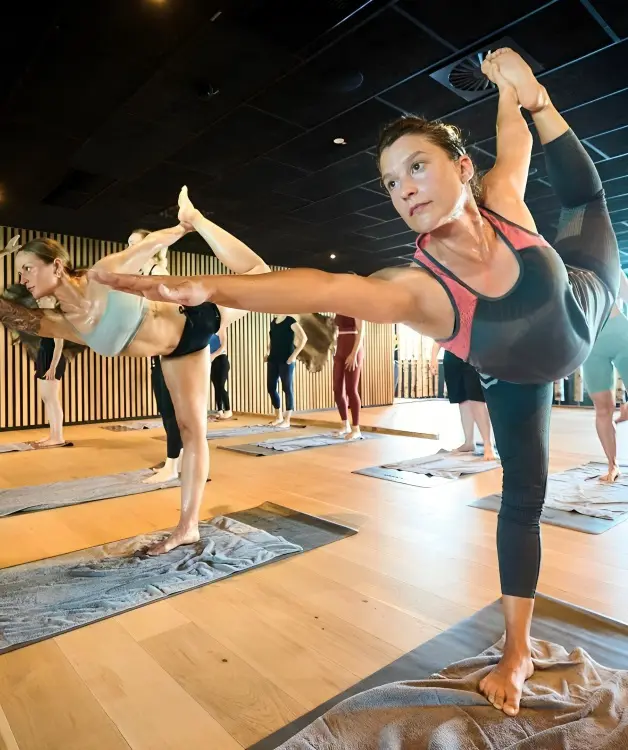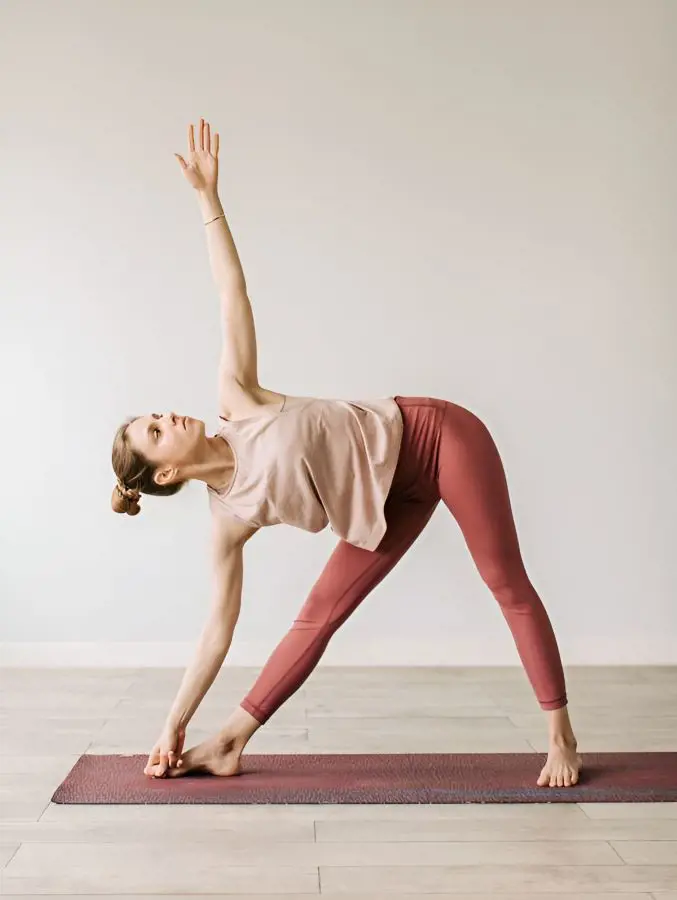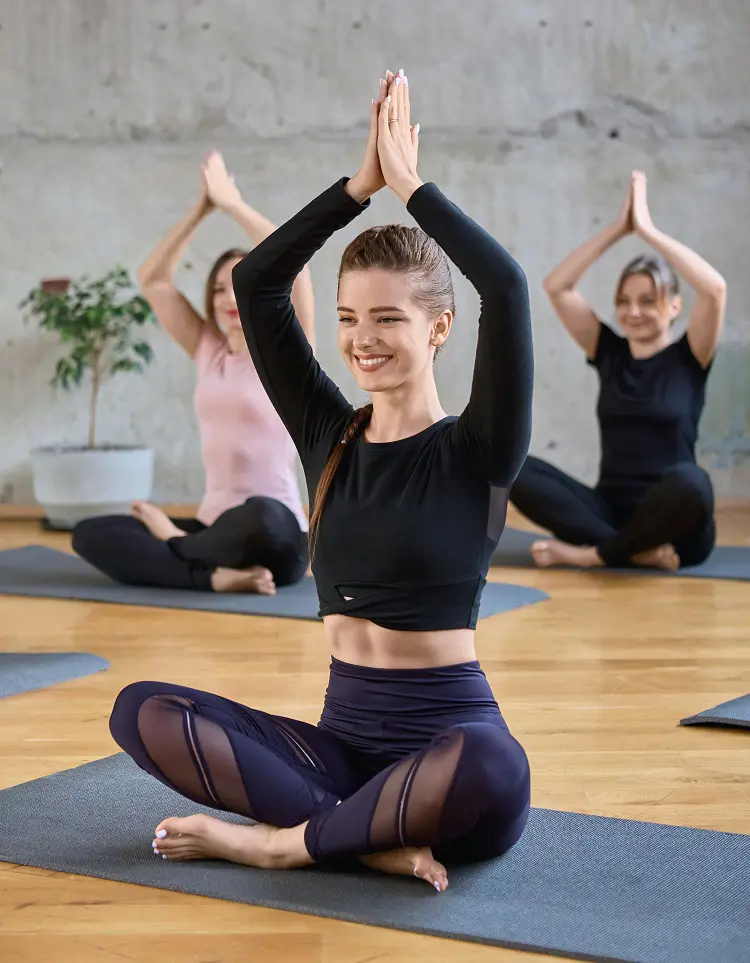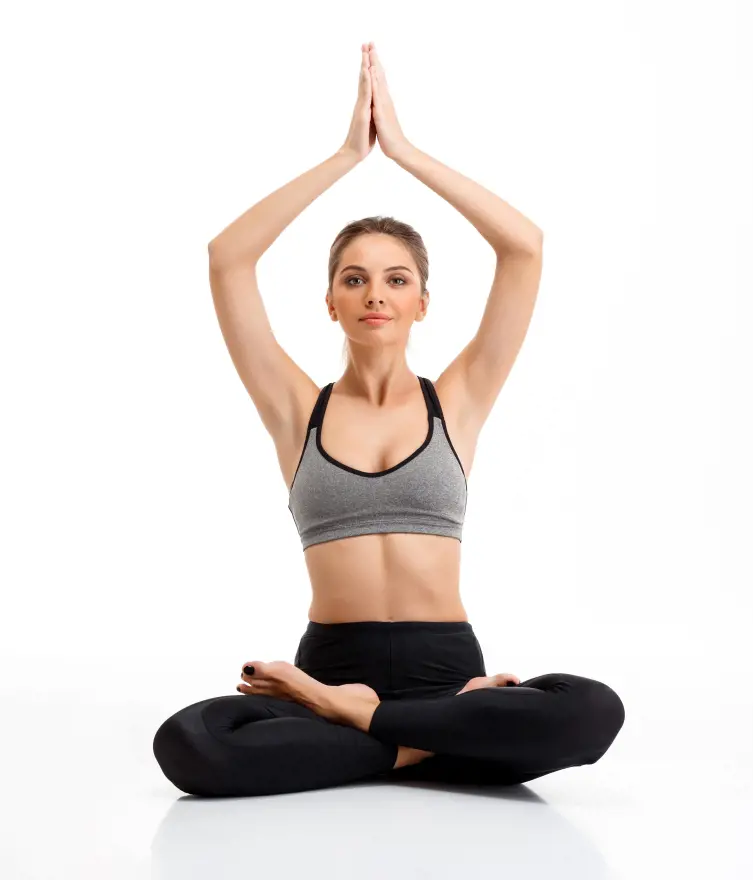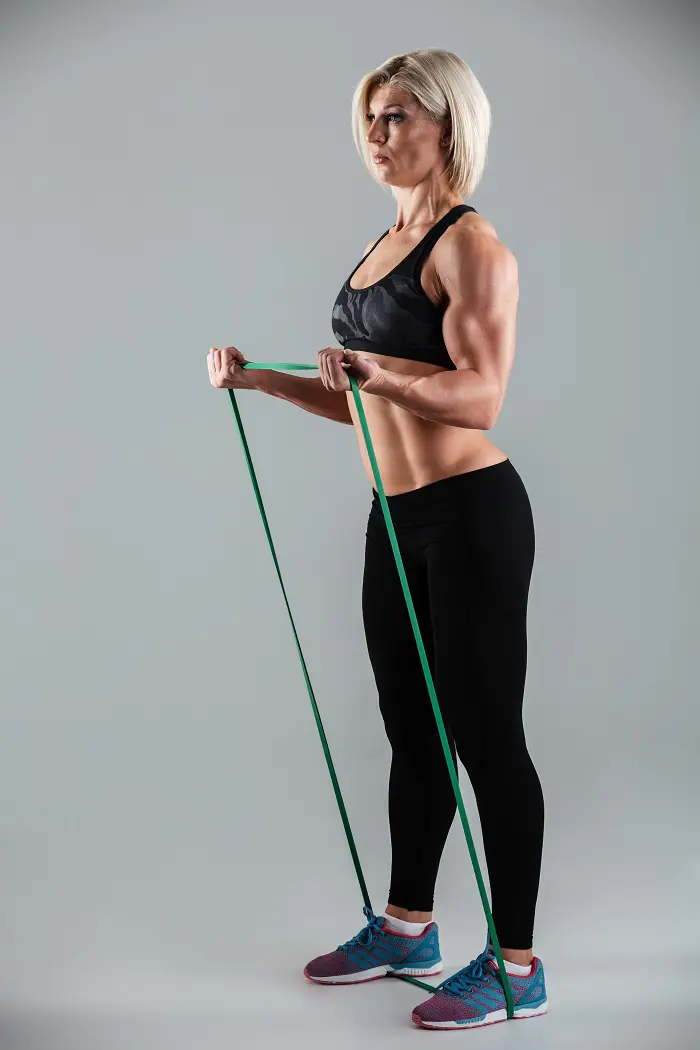Pigeon Pose Yoga Health Benefits And Variation
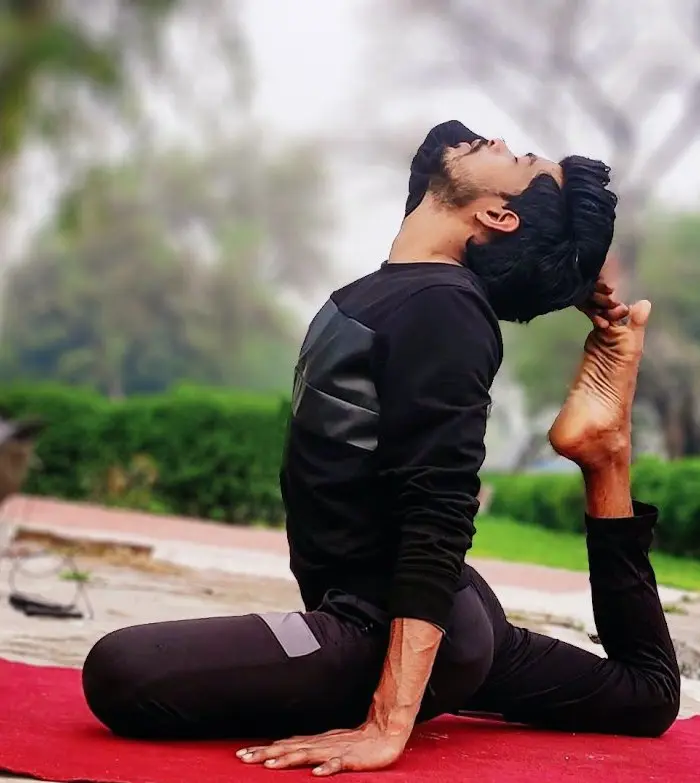
Pigeon Pose is a rejuvenating yoga that works to improve the flexibility and mobility of the hips and thighs. Adding this to your daily workout routine benefits you in many ways.
It is known for stretching and opening the hip flexors, groin, and piriformis muscles, and for stimulating the abdominal organs. You can take full benefit from this exercise by ensuring that you do it the right way.
What Is The Pigeon Pose In Yoga?
The Pigeon Pose in yoga refers to a powerful posture that mixes hip opening with deep stretching and works to stretch the hip flexors, groin, and lower back to increase flexibility and mobility. This asana stimulates the gastrointestinal organs which improves digestion and disposal.
This yoga posture is a physical pigeon stretch as well as an emotional release which allows the practitioners to release the tension and emotions held in the hips. This results in a sense of liberation and surrender. The pose promotes mindfulness and contemplation which makes it an effective tool for both physical and mental health.
Benefits Of Pigeon Pose
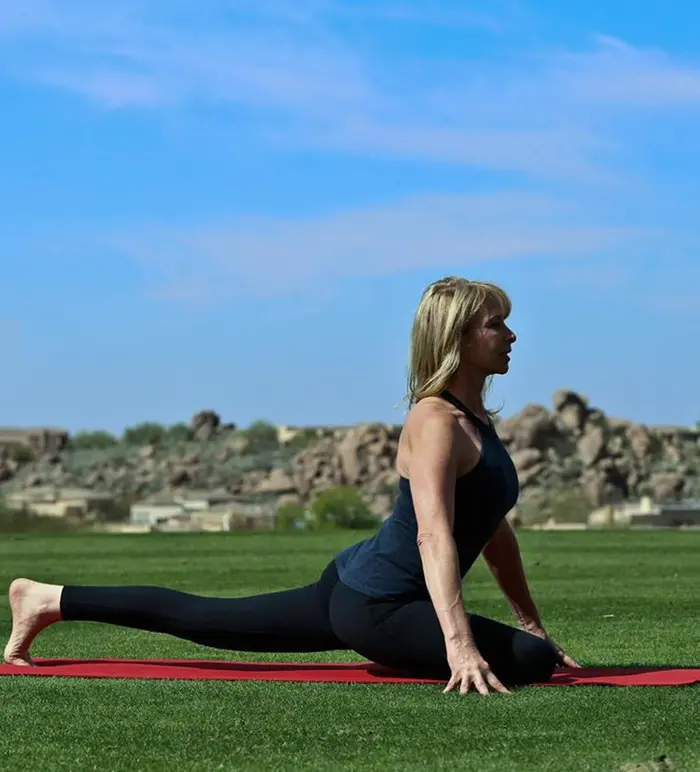
The main targeted areas of the pigeon pose consist of hip flexors, glutes, and piriformis muscles which improve the hip range of motion. It also helps to strengthen the muscles in the hips and lower back.
By extending the muscles and tendons around the spine, this yoga position also helps ease lower back discomfort. Stretching the piriformis muscle can also help relieve sciatic pain along with other benefits.
- This is an excellent exercise for stretching and increasing flexibility in the hip flexors and external rotators.
- It helps to open up the hips by reducing tightness and discomfort while also improving your posture.
- The pose stretches the lower back promotes spinal extension and alleviates lower back pain.
- It increases blood flow to the pelvic region and provides relief to those suffering from sciatica.
Step By Step Guide To Do The Pigeon Pose
The Pigeon Pose is a beneficial exercise if you do it regularly by making a routine. For beginners, this can be an intense stretch to first thing is to find a comfortable way to start.
Step 1: Start With Downward-Facing Dog Pose
Start by placing your wrists under your shoulders and your knees under your hips. Slowly lift your hips toward the ceiling by straightening your legs to form an inverted V-shape.
Step 2: Work The Knee and Adjust The Leg
Raise your right leg off the ground and place your right knee towards the back of your right wrist. Then, you should rotate the right shin parallel to the front of your mat. Maintain straightness of your left leg as you bring your right leg to the mat.
Step 3: Extend the Back Leg
Now bring your right knee outward so that it is further to the right than your hips while keeping your right foot dorsiflexed or flexed towards the shin. Gently lower your right buttocks to the ground but ensure your weight is evenly distributed between both hips. Place a folded towel underneath the right side of your hip if this is too difficult.
Step 4: Square Your Hips
Put both hands under your shoulders and gently press into your palms to straighten and lengthen your spine. Feel the stretch by looking straight ahead which completes your classic Pigeon Pose.
Step 5: Inhale and Exhale
At last, take a deep breath and exhale by lowering your chest over your right leg and stretching your arms straight in front of you with your elbows slightly bent.
Now, place your brow on a yoga block or your forearms crossed in front. If this is too much for you, simply reach forward as much as you can.
Step 6: Repeat on the Other Side
After you feel relaxed, gently bring your shoulders back away from your ears and hold the position for 5 to 10 slow, deep breaths. Return to the Downward-Facing Dog pose and then switch to the left side.
The Variations Of The Pigeon Pose
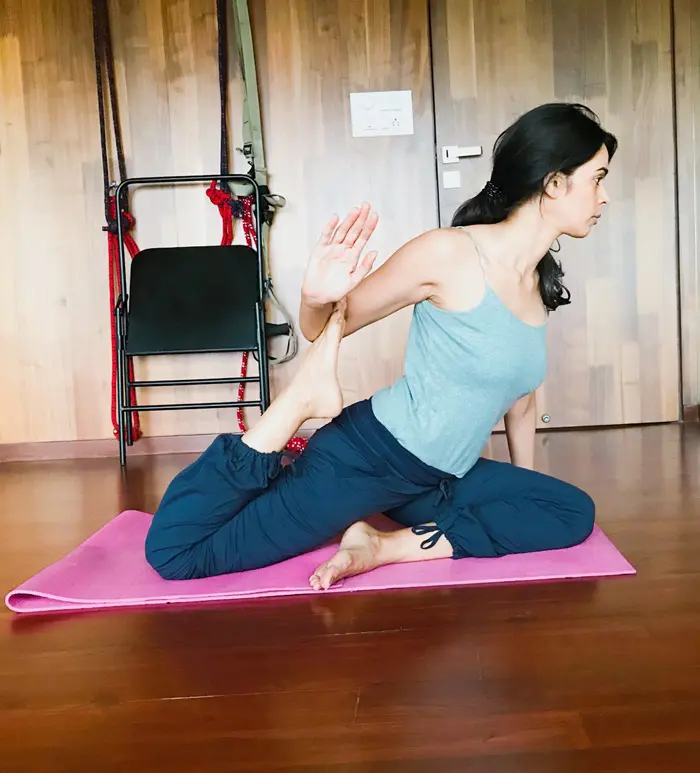
There are many ways to perform the Pigeon Pose. These yoga pose variations offer unique benefits and can be adapted based on your flexibility and comfort level.
1. Classic Pigeon Pose
This is the basic version of the famous yoga posture where one leg is folded in front of you and the other is extended straight back. This variation is ideal for you if you want to work the basic upright pose to get a relieving stretch in the hips and release the lower back.
You begin this exercise in a tabletop position, then pull your right knee towards your right wrist and let your shin lay diagonally across the mat.
2. King Pigeon Pose
This is a more advanced variation where the back foot is brought towards the head and the hands reach back to hold the foot. This is a demanding pose that extends the thighs and opens up the chest.
The emphasis on the backbend is increased in this variation which creates a deeper stretch and a more heart-opening sensation. This variant not only improves the physical benefits but also fosters a sense of vulnerability and surrender, both physically and emotionally.
3. One-Legged King Pigeon Pose
This is a majestic and hard yoga posture that gracefully mixes strength and flexibility. The beauty of this pose lies in the fact that it strikes a beautiful balance and submits to the deep stretch in the hip flexors and quadriceps.
Begin this king pigeon pose variations in the usual posture and for the one-legged twist, reach back with one hand and gently pull the foot of the extended leg towards your glutes. Lift your torso at the same time, elongating your spine and opening your chest.
4. Sleeping Pigeon Pose
This is a restorative version where the upper body is lowered to the ground and the arms are stretched forward, allowing for a deep hip stretch. Sit with one leg folded in front of you and the other extended straight back.
It focuses on the hips and thighs, increases flexibility and tension release, and helps the hip muscles to progressively open up. This is excellent for stretching the hip flexors, increasing relaxation, and improving overall hip mobility.
5. Reclining Pigeon Pose
For this variation, lie on your back, cross one ankle over the opposite knee, and draw the legs toward your chest. This figure-four shape pose is great for those who find sitting upright challenging.
The ease of maintaining the posture makes it accessible for practitioners of all levels and provides a therapeutic release for tight hips and lower back discomfort.
6. Seated Pigeon Pose
This variation is a modification ideal for those who find the traditional Pigeon Pose too intense. Maintain a straight spine and reach your hands toward the extended foot for a deep stretch.
This is a fantastic hip opener that offers a deep stretch to the hips and glutes and can be easily incorporated into a seated practice. It promotes flexibility and releases tension from your body.
Risk Of Doing The Pigeon Pose
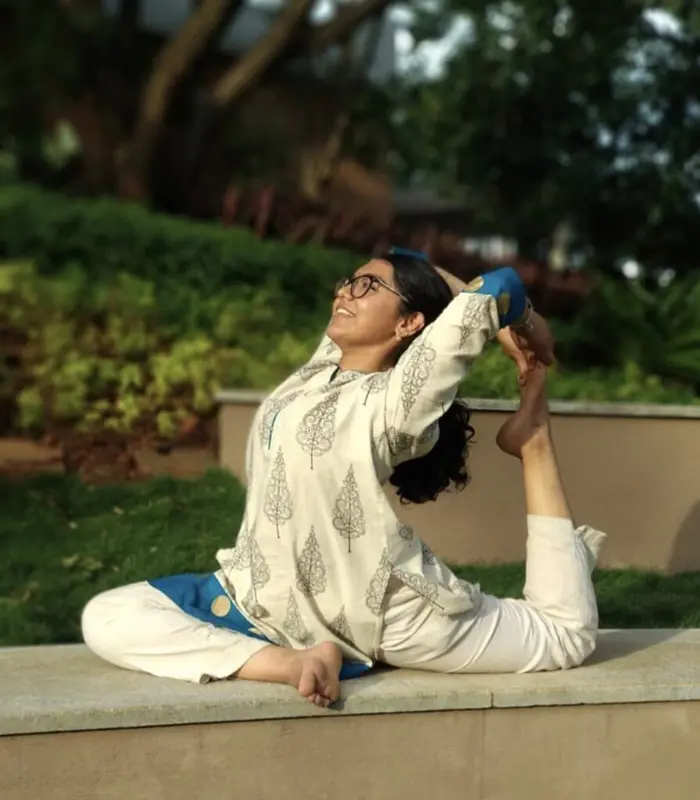
The pigeon pose is a highly beneficial practice that works wonders for your hips and legs. However, there is a high chance of people sustaining injuries due to the intense stretching. Here are some of the risks:
- The bending of one knee and extending the other leg can result in knee strain or injuries
- Overstretching and improper alignment can lead to lower back discomfort
- People with existing hip problems can sustain hip injuries
- It involves forward folding that can cause shoulder or neck strain
- This pose has a high chance of affecting individuals with high blood pressure
- If the weight is not distributed evenly, it can put excessive pressure on the wrists
Common Mistakes While Doing Pigeon Pose
- Incorrect alignment of knees
- Collapsed hips
- Overarching the back
- Rounding the back
- Misplacing the Front Foot
- Putting too much weight on one side
- Skipping warm-up
The Bottom Line
Pigeon Pose is an excellent posture for stretching the hips and lower back when done correctly. It assists in improving hip flexor and lower back muscular flexibility while also aiding digestion.
It is also believed to aid in relieving mental stress. So, if you are looking to add something new to your everyday yoga regimen, this is an ideal option. But you need to approach this with caution and take proper guidance from experts before trying it on your own.
Recent posts
Yoga
Yoga
13 Breathing Techniques To Bring Calm And Relieve Anxiety
Practicing breathing techniques can be extremely helpful in soothing anxiety and bringing a sense of calm. They are easy to perform and provide a faster way to induce relaxation. However, with so many techniques out there, choosing the best ones can ...
Yoga
15 Health Benefits of Hot Yoga to Heat Up Your Fitness
Do you feel like you're stuck in a monotonous yoga routine? Ever wish for a yoga session that challenges your body to drip sweat? Imagine walking into a room filled with heat, where every move tests your strength, flexibility, and determination. If y...
Yoga
14 Awesome Yoga For Lower Back Pain
Lower back pain is a common complaint, impacting millions of people worldwide. It can result from various factors, including poor posture, muscle imbalances, and injuries. Fortunately, yoga offers a gentle and effective approach to alleviating pain a...
Yoga
15 Yoga For Beginners To Mindful Well Being
Yoga isn't just about doing cool poses that you see on TV or in advertisements. It's way more! Besides the physical exercises (called asanas), yoga includes self-disciplinary practices, such as meditation, chanting, mantra, breath work, prayer, ritua...
Yoga
15 Yoga Stretches You Can Do Everyday
People have been practicing yoga since ancient times, combining physical postures, breathing exercises, and meditation. These routines offer many benefits for both your physical and mental health. They include improved flexibility, strength, and bala...
Yoga
14 Types Of Yoga And Their Health Benefits
Yoga is an ancient practice that combines physical postures, breathing techniques, and meditation to improve overall health. It is performed on a mat and can be done at any time, with many people choosing mornings for a fresh start. The practice offe...

